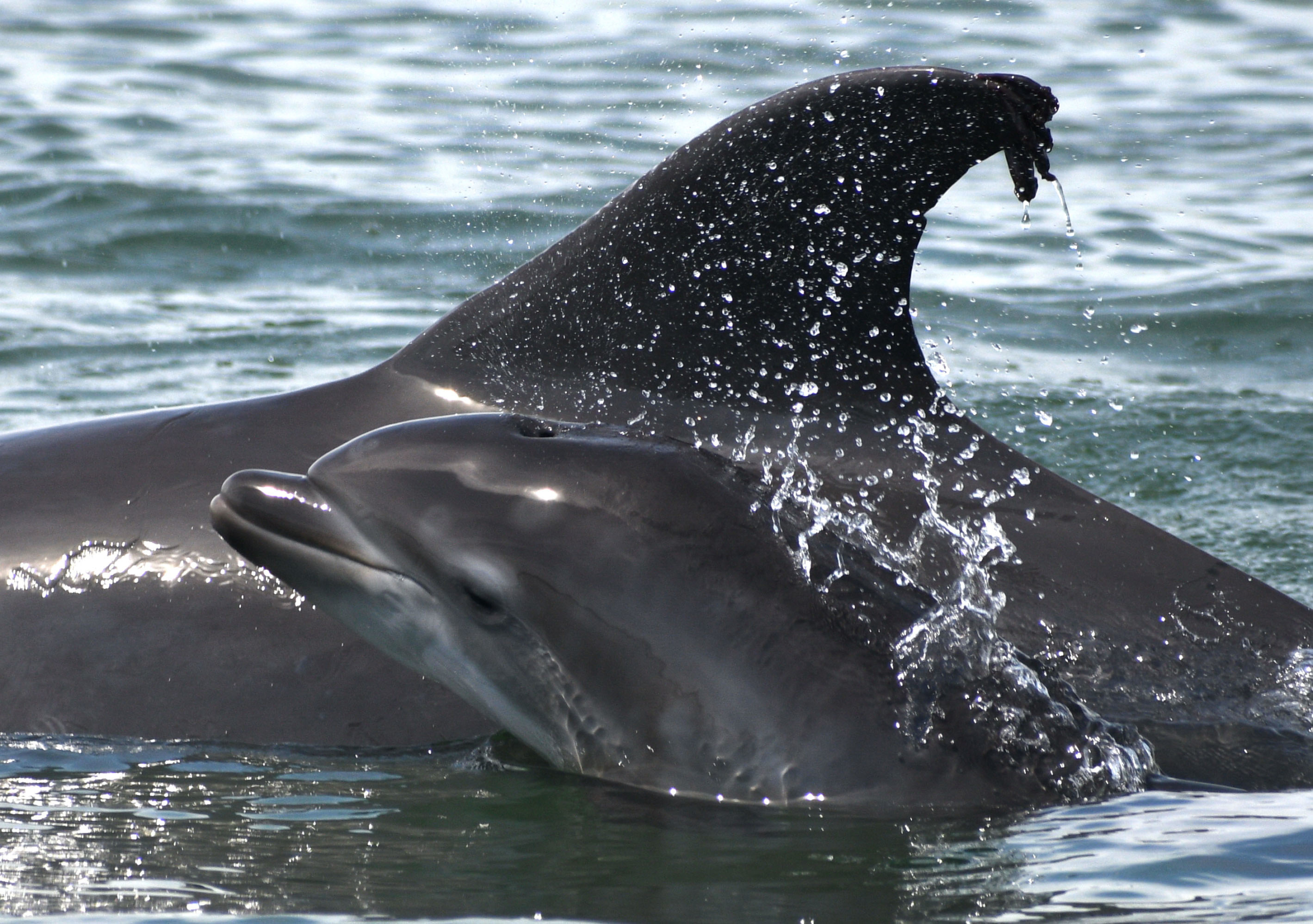We’ve all probably done it: Change the pitch and tone of our voices when talking to babies. Now, new research from Sarasota Bay published in the peer-reviewed journal The Proceedings of the National Academy of Sciences, shows that dolphin moms do it, too!
“Motherese” (also known as “parentese”) is a speech pattern that human caregivers use to communicate with babies and children. These child-directed communications (CDC) include speech patterns that promote attention, bonding and language acquisition. This pattern has been documented across nearly all cultures and languages, but evidence of its occurrence among non-human animals is rare.
Now, thanks to the long-term studies of the Chicago Zoological Society’s Sarasota Dolphin Research Program and its colleagues, evidence has emerged that dolphin moms change their signature whistles when they communicate with their calves.
The SDRP has been recording dolphin whistles since 1975. Today, the Sarasota Dolphin Whistle Database contains 938 recording sessions of 302 individual dolphins; we know the age, sex and matrilineage for most of them.
One of the things these recordings have allowed our acoustics colleagues from Woods Hole Oceanographic Institution (WHOI) and the University of St. Andrews to do is find support for the 1960s hypothesis by David and Melba Caldwell that each individual dolphin has a unique signature whistle. These whistles allow them to recognize others of their species as individuals with separate identities — almost as if they were names.
Now, ongoing studies of dolphin signature whistles and how dolphins use them has taken us a step further in understanding dolphin communication. In the paper “Bottlenose dolphin mothers modify signature whistles in the presence of their own calves,” lead author Dr. Laela Sayigh, a biologist at Woods Hole Oceanographic Institution and professor at Hampshire College, shows that female bottlenose dolphins increase the maximum frequency and frequency range of their signature whistles when in the presence of their offspring, paralleling similar changes in human motherese. The study compared recordings of 19 female dolphins when they were accompanied by their calves and when they had no calves present. In every case, when the females were with their calves, they communicated using higher frequencies.
“It’s amazing to be able to document this type of communication in dolphins,” Sayigh said. “These new data add to growing evidence that dolphins provide an important animal model for studying the evolution of vocal learning and language.
“We think this is an example of convergent evolution — when similar traits emerge in very different species. In this case, the trait — motherese — has been documented in zebra finches, humans and now dolphins. It may function to enhance attention, bonding and vocal learning in dolphin calves, as it does in human children.”
Co-Authors
- Nicole El Haddad, Biology Department, Woods Hole Oceanographic Institution; Earth and Environmental Sciences Department, University of Milano
- Dr. Peter L. Tyack, Biology Department, Woods Hole Oceanographic Institution; Sea Mammal Research Unit, Scottish Oceans Institute, University of St. Andrews
- Dr. Vincent M. Janik, Sea Mammal Research Unit, Scottish Oceans Institute, University of St. Andrews
- Dr. Randall S. Wells, Chicago Zoological Society’s Sarasota Dolphin Research Program
- Dr. Frants H. Jensen, Biology Department, Woods Hole Oceanographic Institution; Marine Mammal Research, Department of Ecoscience, Aarhus University; Biology Department, Syracuse University
Citation
- Sayigh, Laela S., N. El Haddad, P. L. Tyack, V. M. Janik, R. S. Wells, F. H. Jensen. 2023. Bottlenose dolphin mothers modify signature whistles in the presence of their own calves. The Proceedings of the National Academy of Sciences. 120 (27) e2300262120.





